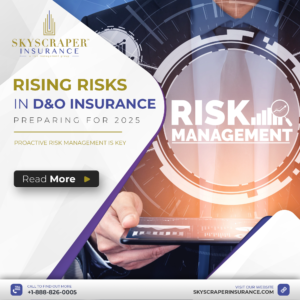A shift to non-traditional solutions: Parametric insurance provides an increasingly compelling alternative.
The commercial-property insurance landscape is undergoing a notable evolution, marked by a discernible shift toward non-traditional solutions.
As alternative products gain traction and bridge the gaps left by traditional coverage, one innovative approach stands out: Parametric insurance.
Also known as index-based insurance, parametric insurance policies have most frequently been implemented in developing economies. They’re also gaining momentum among U.S. businesses in disaster-prone areas.
This paradigmatic shift is not merely an adaptation to changing times; it’s a pivotal reimagining of how businesses protect their assets in the face of unpredictable risks.
The rise of parametric insurance
Unlike traditional indemnity-based insurance, which assesses losses after they occur, parametric insurance operates on predefined parameters such as wind speeds, earthquake magnitudes or rainfall levels. It functions on the principle of triggers: When a predefined event occurs, such as a certain level of seismic activity or a specified wind speed, policyholders receive a predetermined payout.
One of the defining features of parametric insurance is its ability to provide swift payouts. Traditional insurance often involves lengthy claims processes, evaluations and negotiations, causing funding delays for the affected businesses. Conversely, parametric insurance eliminates much of this bureaucracy. Since payouts are triggered by predefined events, there’s less ambiguity in assessing the damage, leading to faster disbursement of funds. This rapid injection of capital can be instrumental in facilitating quick recovery, allowing businesses to resume operations and minimize downtime, ultimately reducing the overall financial impact of the incident.
Moreover, this innovative approach offers a level of customization that traditional insurance struggles to match. Businesses can tailor their coverage precisely to their needs, selecting triggers and parameters that align with their specific vulnerabilities.
For instance, a coastal business might opt for a parametric insurance policy linked to hurricane wind speeds, ensuring they receive compensation immediately after a storm hits, regardless of the actual damage incurred. This flexible, tailored approach empowers businesses to proactively mitigate risks that are most pertinent to their operations and allows for more efficient use of insurance resources, avoiding unnecessary premiums on non-relevant risks.
Another advantage of parametric insurance is its transparency. The triggers and parameters are explicitly defined in the policy, leaving little room for disputes over whether a claim qualifies for compensation. This transparency fosters trust between insurers and policyholders, a crucial aspect in an industry where clarity and reliability are paramount.
Understanding parametric insurance pitfalls
Though businesses, especially those vulnerable to specific perils like natural disasters or market fluctuations, are recognizing the appeal of this innovative approach, parametric insurance isn’t without risks. The predetermined nature of payouts means that they might not fully align with the actual losses incurred. There could be scenarios where the triggered event doesn’t directly correlate with the actual financial impact, leaving businesses with a shortfall in coverage.
Another pitfall to consider is basis risk, where the triggering event might occur but fail to meet the predefined parameters for payout. This discrepancy between the defined triggers and the actual impact could leave businesses without the anticipated financial support precisely when they need it most.
Parametric insurance and the future of coverage
Looking ahead, the future of commercial property insurance appears increasingly intertwined with non-traditional approaches like parametric insurance. As technology advances and data analytics become more sophisticated, parametric insurance will likely become more precise, reducing basis risks and refining its ability to provide prompt, tailored coverage. However, it’s still important for policyholders to understand its nuances and limitations.
Nevertheless, while parametric insurance represents just one facet of the evolving landscape, it’s a compelling alternative to traditional indemnity-based insurance for businesses looking for an agile, proactive way to protect their assets in an increasingly unpredictable world.
Mark Pennebaker is senior vice president and Commercial Lines practice leader at Foundation Risk Partners. These opinions are the author’s own.




